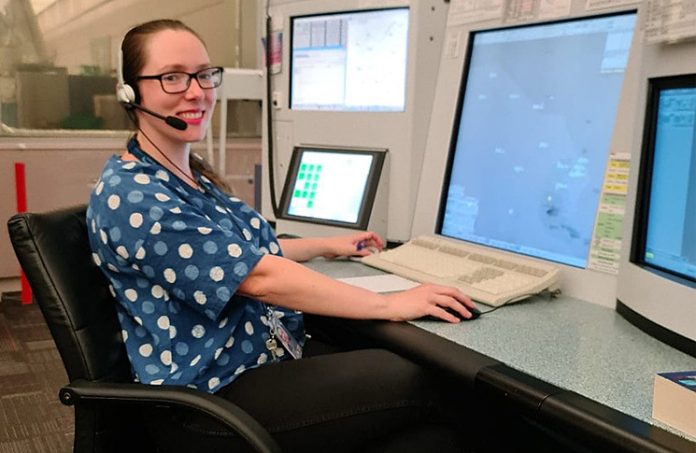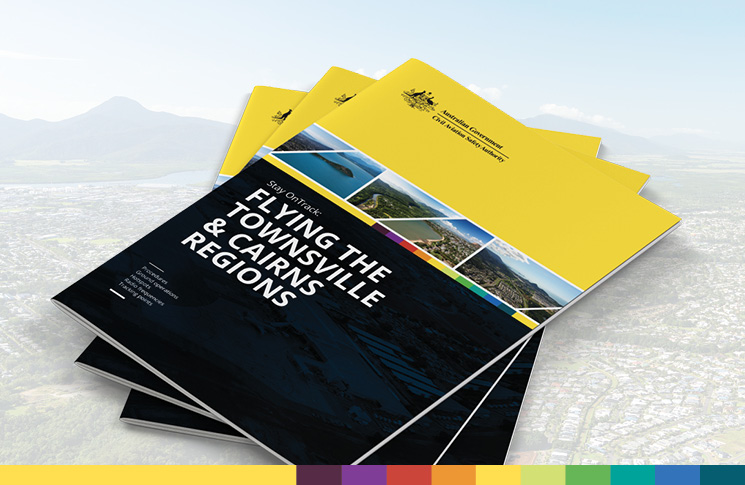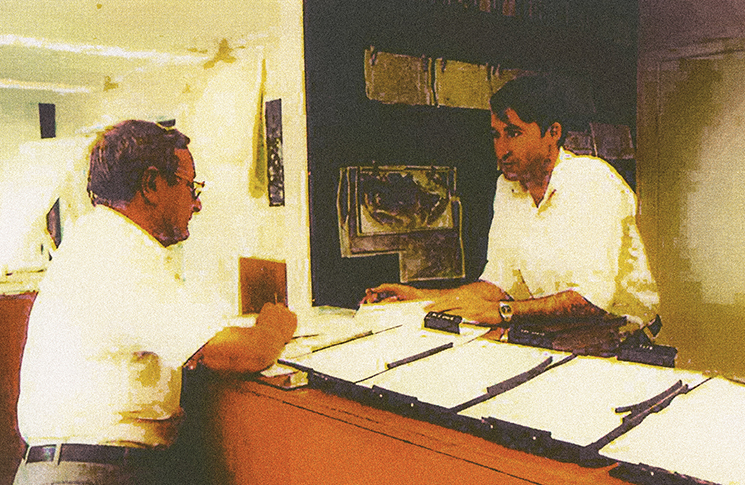Playing three-dimensional chess with real aircraft for pieces isn’t for everyone, but Scarlett McNab excelled, despite no background in aviation.
Most people who become air traffic controllers have a Diploma in Aviation or are private pilots and want something else to supplement their expensive flying affairs. But that wasn’t Scarlett McNab. Her dad is a lawyer and mum a nurse – and she wasn’t looking to become a pilot, either.
Scarlett’s career in air traffic control for Airservices Australia presented itself via a search on a job website.
‘I left school with no idea what I wanted to do with my life,’ she says. ‘I loved science, so I enrolled in a Bachelor of Science – but quickly realised I didn’t want to be a research scientist. Then, one day, as I was browsing, an air traffic controller position appeared and I clicked it.’
That was Scarlett’s unexpected segue into the aviation industry.
She applied without knowing much about the role and started a rigorous 7-month recruitment process.
‘I was pretty lucky that I applied towards the end of April, then started in November that year. Sometimes the recruitment process takes more than a year,’ she says.
After completing multiple interviews, scenario-based tests, basic mathematics, comprehension and situational behaviour quizzes, she got through to the assessment centre, the final stretch. Applicants spend a full day at the centre with HR, other controllers and Airservices staff to undergo team-based activities. After the day finished, Scarlett made the cut.
She began her 15-month training program through the Airservices training academy and another 3-weeks of simulator training with a group of new controllers.
‘I was terrified,’ she says. ‘I was thinking, “What am I doing? Why did I think I could do this?” I was very nervous, but quickly realised I did know this stuff. I do know how to separate these aeroplanes. And there’s a trust you develop with fellow controllers.’
After 8 years, Scarlett has settled into her role and loves it. She works in procedural and surveillance overland environments and oceanic control. She has also developed her training, assessment and leadership skills as an on-the-job training instructor, workplace assessor and shift manager.
‘I like it because it constantly challenges me,’ she says. ‘There’s a lot of variety and there’s always something new I can learn. Working on a day when there’s weather and you’re vectoring aircraft, or it’s a busy stint with close and tight separation – they’re the days I leave with an immense feeling of satisfaction. When everything worked out perfectly and no-one was delayed, I know I did my job well.
‘The more challenging part is when it’s less busy. You have to make sure you remain alert, engaged and switched on. Otherwise, that’s when incidents like late coordination or a delay in responding to radio calls are more likely to happen. But when all your senses are alert, a lot less will be missed.’
Need to know: safety tips for pilots
Based on her substantial experience, Scarlett has 4 safety tips for general aviation and sports aircraft pilots:
1. Don’t be afraid to talk to us. We’re not scary – we’re here to help. If you need something from us, call and ask. There are more of us [air traffic controllers] and we can split the airspace among the team to help you if you need it. Don’t be afraid to do that, no matter how busy the radio sounds. It’s better to ask for help earlier versus when you’re shorter on fuel or lost.
2. Affirm if you’ve sighted traffic. If ATC passes on information about aircraft traffic within your vicinity, and you respond with ‘Roger’ and continue heading towards each other, we will call you again. If you sight the other traffic, tell us. Our job is to help you be safe and avoid colliding with other aircraft. We’ll stop bugging you about it once we know you’ve got the traffic sighted.
3. Don’t get caught up on phraseology. There may be a time when you’re unsure of the correct phraseology, and some pilots avoid making a call because they don’t want to stuff up. Please don’t hold back. Do and say whatever you need to say to communicate your needs at the time. We all stuff up, and it doesn’t matter if you speak in plain English because you’re nervous or scared. Getting the phraseology right is not as important as getting the information you need to aviate safely.
4. Wait before you broadcast over the radio. I’ll often listen to a pilot’s transmission and another pilot joining the new frequency transmits over the top. Please do not do this. It creates extra work for ATC and takes us longer to respond to the original call, including yours. Pausing for a few seconds before you transmit avoids this issue altogether.






Good advice Scarlett, thanks. It’s reassuring to know that ATC pesonnel are there to look after us, warn us of potential problems and help us if we get “positionally challenged”. Best wishes!
Also remember that many ATCs also have pilot’s licences, those that don’t have still an excellent understanding of a pilot’s flying environment. The service you get from pilot, or non pilot, ATC will be excellent. We are here to help. (ex ATC/CPL)